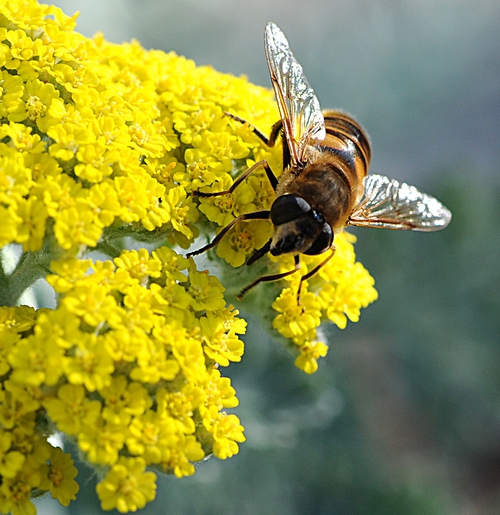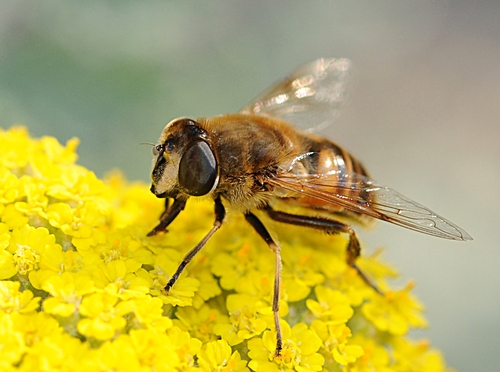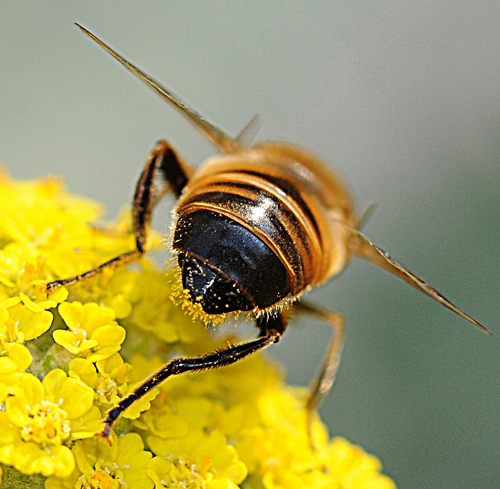- Author: Kathy Keatley Garvey
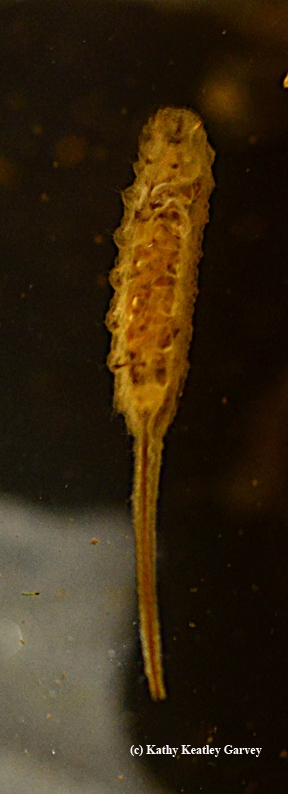
How many times have you encountered a "honey bee" on the Internet, in a book, magazine, newspaper or other publication, and found a syrphid fly misidentified as a honey bee?
It's truly amazing how often syrphid flies are mistaken for honey bees.
Take the Eristalis tenax, a European hover fly quite established in the United States.
And quite "established" as a honey bee.
It's a syprhid, in the family Syrphidae; in the subfamily, Eristalinee; in the tribe Eristalini; in the subtribe Eristalina; and in the genus, Eristalis.
It's typically called a drone fly (it's about the size of a male honey bee or drone) but some folks also call it a hover fly, a flower fly or a syprhid.
No matter what you call it, it's a fly, not a bee.
Now to the "rats" part.
Their larva is known as a rat-tailed maggot. Its long tail-like structure resembles that of a rat or a mouse. Sometimes it looks like a corn dog with a tail. Or a butterscotch-colored lollipop with a tail.
Rat-tailed maggots live in such habitats as sewers, manure pile pools, drainage ditches and other badly polluted areas. Which is probably why you don't see them. (And if you did, you'd know it wasn't a corn dog with a tail.)
But in the adult stage, they're pollinators. They go where the honey bees go.
You'll find the adult drone flies nectaring on such flowers as lavender, catmint, daisies, sunflowers and yarrow, and hear people exclaiming "Look at the bees!"
I'm waiting for someone to say "They used to be rat-tailed maggots."

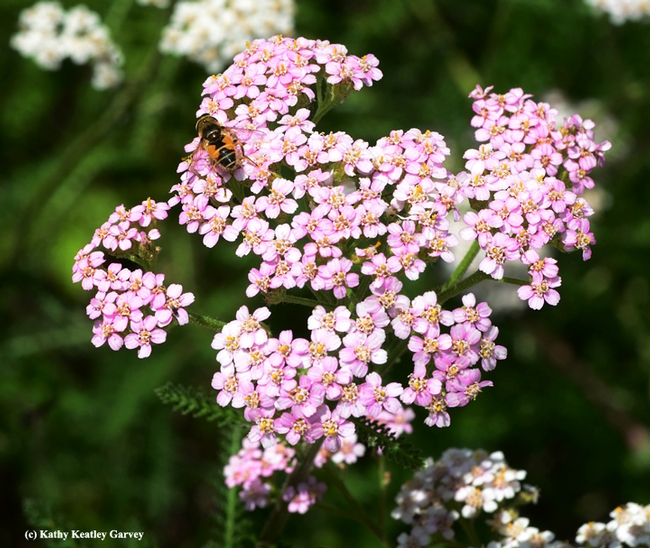

- Author: Kathy Keatley Garvey
You may have noticed this little floral visitor in your garden.
It might appear to be a bee, a common mistake to the untrained eye or those who think that all floral visitors are bees.
But it's a fly, and flies are pollinators, too!
This fly, from the genus Eristalis, family Syrphidae (hover flies), order Diptera, is probably Eristalis stipator, says fly expert Martin Hauser, senior insect biosystematist with the Plant Pest Diagnostics Branch, California Department of Food and Agriculture.
In its larval form, Eristalis, found in aquatic habitats, is known as a rat-tailed maggot, due to its appendage that resembles a snorkel.
Next time you see this little fly on a flower, you can tell your friends "In its larval stage, it's a rat-tailed maggot."
As they widen their eyes and raise their eyebrows, you can add: "But in its adult stage, it's a pollinator."
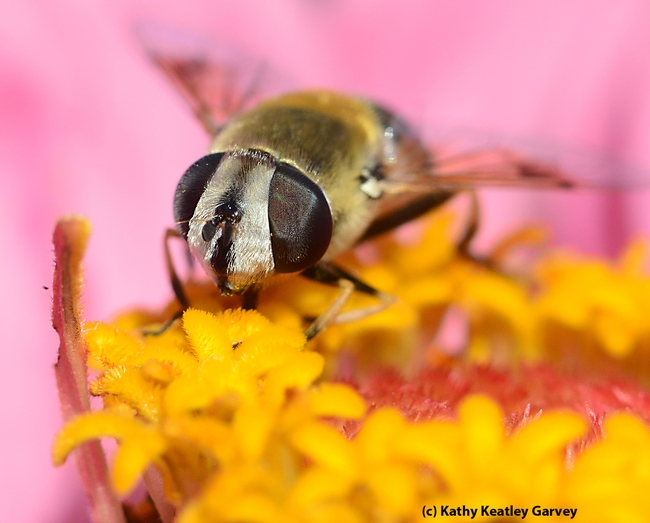

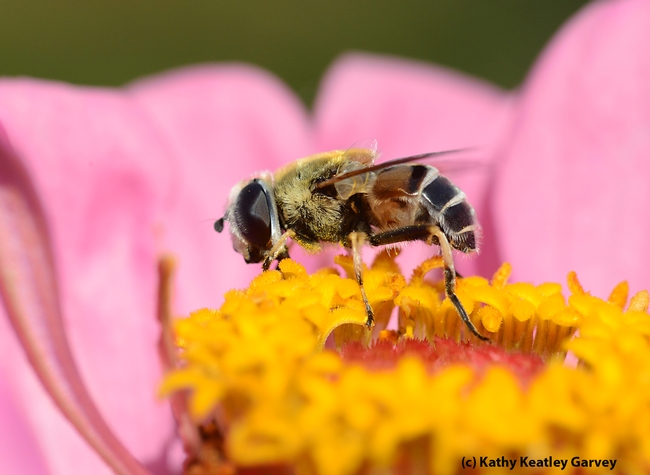
- Author: Kathy Keatley Garvey
Yarrow, yarrow, yarrow.
Drone fly, drone fly, drone fly.
This little insect is often mistaken for a honey bee. In the adult stage, both the drone fly and honey bee nectar flowers. However, the drone fly is a syrphid fly (family Syrphidae, subfamily Eristalinae, tribe Eristalini, genus, Eristalis). Like all syrphids, it has two wings. The honey bee has four.
Other distinct differences tell you it's a fly, not a bee. It's amazing, though, how often stock photos proclaim "honey bee" when the insect is actually a drone fly.
In its larval stage, the drone fly is known as a rat-tailed maggot. You'll see it in stagnant water, such as in ditches, ponds and drains. It feeds on stagnant rotting organic material.
We spotted this drone fly sipping nectar on a brilliant yellow yarrow (Achillea millefolium). If you look closely, you'll see yellow pollen clinging to its abdomen.
Flies, too, are pollinators!
